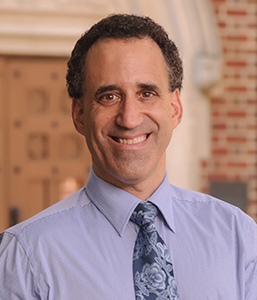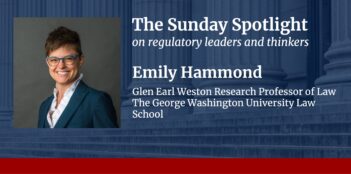
Smart Grid Interoperability Panel provides model for collaborative standards development.
A federal statute directs two agencies to work together. One is a non-regulatory agency with extensive technical expertise; the other has regulatory jurisdiction. A statute establishes a process by which the first agency generates know-how and the second enshrines it in a series of rules applying to the regulated industry. The first time the agencies follow this process, the regulatory agency declines to adopt the other agency’s suggestions, which raises concerns about the process itself.
And yet, on reflection, the decision appears to be wise – in fact, even “smart.”
The context is the development of the Smart Grid – the planned transformation of America’s aging electric grid using digital technologies, and enabling potentially revolutionary consumer applications. The Smart Grid may prove to be as transformative as the Internet, redefining every aspect of electricity generation, distribution, and use. But unlike the Internet, developing the Smart Grid requires a high-wire act of establishing a more capable network where an older one already exists and where part of the established infrastructure is controlled by monopolists (utilities). In addition, the regulatory landscape for the electric grid is complex, to say the least. State public utility commissions, the Federal Energy Regulatory Commission (FERC), utilities, and other private sector actors (including new technology companies that might deploy their products and services on the Smart Grid) form a complex network of institutional interaction against a backdrop of overlapping regulatory jurisdictions.
While the Smart Grid’s promise is great, there are numerous obstacles to its development, including early stage resistance, a lack of incentives for consumers, and a decades-long federal-state tension in electricity regulation. Overcoming these barriers requires both new technologies and transformative regulatory change.
Among the many needs are “interoperability standards,” the rules of the road necessary to allow interaction among various components of the network. As with the early development of the Internet, these are more than technical standards; because they define how interactions take place, they will shape the future development of the new network. The process of setting these standards must also take into consideration the substantial historic role of private sector standards development organizations (SDOs) in issuing technical standards. As so aptly described in a The Regulatory Review series, government reliance on private sector standards introduces a further challenge for the early days of the Smart Grid: avoiding the hazards inherent in simple “incorporation by reference.”
The many complexities of the institutional, regulatory and policy landscape make it difficult to proceed, yet the system needs Smart Grid standards in the near term to ensure interoperability. Otherwise, evolving systems could become a “Tower of Babel,” with discrete parts unable to interact. With multiple federal and state actors involved, different levels of expertise, and different expectations for what the Smart Grid is about and can become, a foundation of standards is necessary to avoid wasteful duplication and delay. Time is of the essence, yet without some advancement of the process, standards development could take years.
Given the complexities and need to act, the Energy Independence and Security Act of 2007, one of the omnibus energy policy statutes periodically issued by Congress, set a framework for developing Smart Grid standards. One federal agency, the National Institute of Standards and Technology (NIST), is responsible for developing standards. The Federal Energy Regulatory Commission (FERC), which has regulatory jurisdiction over the electric grid, is responsible for adopting the resulting standards in rulemaking proceedings, assuming there is “sufficient consensus.”
NIST established the Smart Grid Interoperability Panel (SGIP) with federal leadership in a partnership with numerous public and private sector stakeholders to coordinate standards development while also respecting the historic role of SDOs. This choice of process was unusual. Some public-private partnerships in standards development have taken place in other contexts (health care, for one), but not on this scale with thousands of standards envisioned.
Under the statute, NIST’s role is to submit standards to FERC, which may adopt them if it finds the standards have reached the statutory criterion of “sufficient consensus.” But in 2011, FERC issued an order declining to adopt an initial group of five standards. To many observers, this appeared to be a process failure and a serious setback for the development of the Smart Grid.
I disagree with that assessment. FERC’s order supported the flexibility of the SGIP and allowed the public sector-led partnership to develop the standards and give them credibility, without the need for individual rulemaking proceedings in each case. By holding off on rulemaking proceedings to mandate adoption of the standards (the potential for which had been a primary objection of the states), but preserving the potential for more significant federal intervention later, FERC gave state public utility commissions the flexibility to consider adoption of the resulting standards without the concern of top-down federal regulation.
Recently, the SGIP transitioned to a private sector-led model – SGIP 2.0 – with continued involvement by NIST. Dozens of standards now feature prominently in NIST’s Catalog of Standards. An excellent example of how the standards have already been essential to the Smart Grid is the Green Button Initiative, adopted by numerous utilities, including all three major California investor-owned utilities. Green Button, designed in part on the foundation of a standard that emerged from the SGIP process, offers a standardized means for consumers to obtain their electricity usage data in a detailed format. This information is useful in many ways – think, for example, of aggregating data from thousands of users to generate opportunities for conserving energy. Moreover, this early reliance on the new standards hints at their wider use.
There are important long-range governance implications from the ongoing evolution of this standards development process. It is significant that the interoperability standard-setting process is an adaptive approach to energy law federalism, in which neither top-down federal regulation nor private sector standard setting is the exclusive means of overseeing the Smart Grid’s development. Over time, this model should find wider application, promoting a more positive federal-state relationship in the development of the Smart Grid. It may even portend a more collaborative relationship in energy law federalism generally, avoiding the disruptive jurisdictional clashes that have marked recent attempts to innovate in the electric grid.
That would be smart regulation and smart federalism for the Smart Grid.




